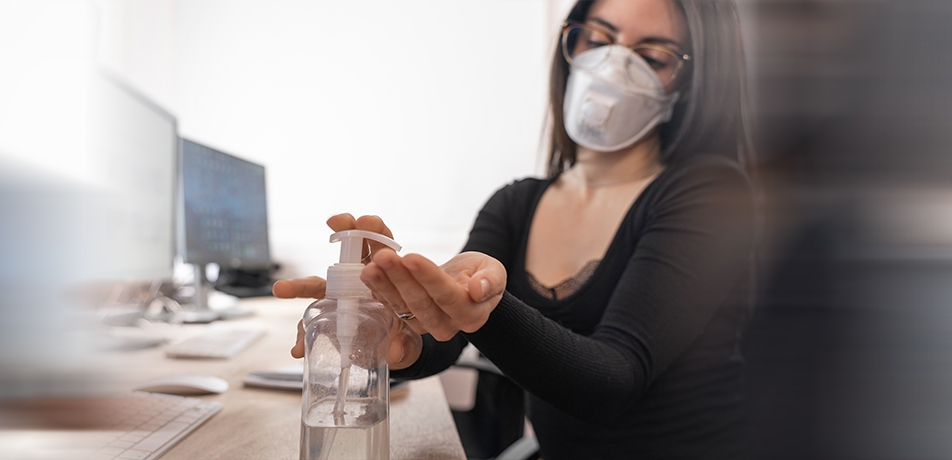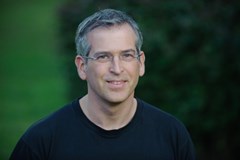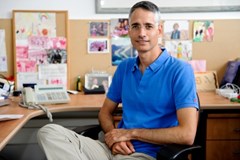
To roll back this calamitous cascade of events, we need exit strategies— integrated sets of policies that will enable a responsible re-boot of productivity while minimizing the risk of COVID-19 resurgence. One component within such a broad strategy, recently proposed by the Weizmann Institute’s Prof. Uri Alon and Prof. Ron Milo, rests on a novel mathematical model for public health involving a cyclic schedule of lockdown and free movement.

The approach calls for lowering the rate of COVID-19 infection through the cyclical opening of shuttered schools, businesses and workplaces. According to this model, discrete sectors of the population would be allowed to leave home and resume their normal activities for a period of four days, while observing coronavirus safety stipulations such as the use of masks and maintenance of social distance. At the end of each period of free movement—during which there would be increased coronavirus testing among the working population—such individuals would return home to observe a full lockdown of 10 days before venturing out again.
Math that adds up to health
These numbers—four days on, 10 days off—are by no means random. Coronavirus infection begins with a three-day latency period during which the virus cannot be passed on to others. Under the proposed model, a protective, 10-day lockdown beginning on day five would counterbalance risk of exposure to the virus during any of the four days when an individual is moving about freely. While exposed individuals could possibly infect members of their own families while they are in lockdown, the stay-at-home period would sequester any active COVID-19 carrier throughout the week when he or she is most infectious, thereby limiting viral dissemination through the wider population. This repeating two-week cycle would strongly limit the spread of the virus, and repress the epidemic.

The ultimate goal of the approach is to reach a situation where, on average, each infected person would pass on the virus to just one other individual or to no one at all—achieving what scientists call a viral replication rate of less than one. But the new plan would also provide something else: hope.
“The cyclical lockdown model could allow millions of people now considered ‘non-essential’ employees to go back to work part-time under less crowded conditions rather than dropping out of the job market altogether, and without waiting for the development of a vaccine,” says Prof. Alon, a member of the Department of Molecular Cell Biology. “It would allow kids to go back to their classrooms, where they would study in small groups with real people, rather than through screens. It would allow society to get back in touch, safely, while helping to ensure that our medical services will not be overwhelmed in the short term.”
Currently a hot topic among policy-makers—the scientists’ preprint describing the model has been shared hundreds of thousands of times—cyclic lockdown is poised to be implemented, on a limited scale, in the field. “Austria decided to re-open its schools using a variant of this approach, and an Israeli high-tech company with a thousand employees has decided to adhere to a cyclic work-lockdown schedule,” says Prof. Milo, a member of the Department of Plant and Environmental Sciences. “For the company’s management, this is a way to maintain productivity and keep more people employed. For us as scientists, this is an opportunity to observe the trends, and adjust our model to achieve the best health and economic outcomes.”
According to Profs. Alon and Milo, both systems biologists who use rigorous mathematics to reveal underlying patterns in the natural world, orderly and successful implementation of a cyclic work-lockdown schedule may lead to a rise in something not usually expressed in quantitative terms: confidence. Working with economists, psychologists, and social scientists—and taking into account differences in culture—the researchers’ aim is to prevent the dispiriting situation where, after population-wide lockdown is lifted, people again find themselves facing an uncontrolled outbreak.
“To maintain confidence—the bedrock of every healthy economy—we need to tell the population what they can expect in the immediate and medium-term future, and show how these limited restrictions will bring them long-term benefit,” Prof. Alon says. “In just a few cycles, we will amass the data needed to tweak the protocol, providing either a little more freedom of movement, or a little more time in lockdown, rather forcing everyone to stay at home. Combined with other approaches, cyclic work may be an effective exit strategy for overcoming both the health pandemic and its economic ramifications.”
Prof. Uri Alon is supported by the Braginsky Center for the Interface between Science and the Humanities Jeanne and Joseph Nissim Center for Life Sciences Research, the Kahn Family Research Center for Systems Biology of the Human Cell, the Estate of Olga Klein – Astrachan, Rising Tide Foundation, the Sagol Institute for Longevity Research, the Zuckerman STEM Leadership Program, and the European Research Council. He is the incumbent of the Abisch-Frenkel Professorial Chair.
Prof. Ron Milo heads the Mary and Tom Beck - Canadian Center for Alternative Energy Research, and is supported by Dr. and Mrs. Brian Altman, Dana and Yossie Hollander, Larson Charitable Foundation New Scientist Fund, the Ullmann Family Foundation, the Zuckerman STEM Leadership Program, and the European Research Council. He is in the incumbent of the Charles and Louise Gartner Professorial Chair.
